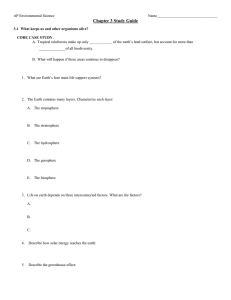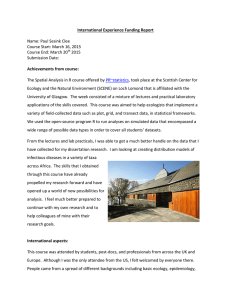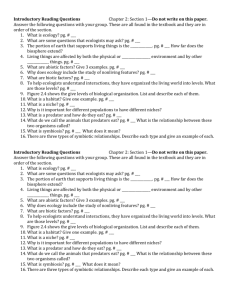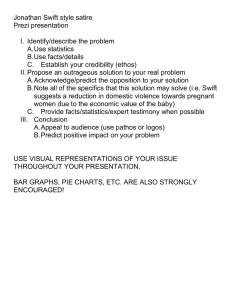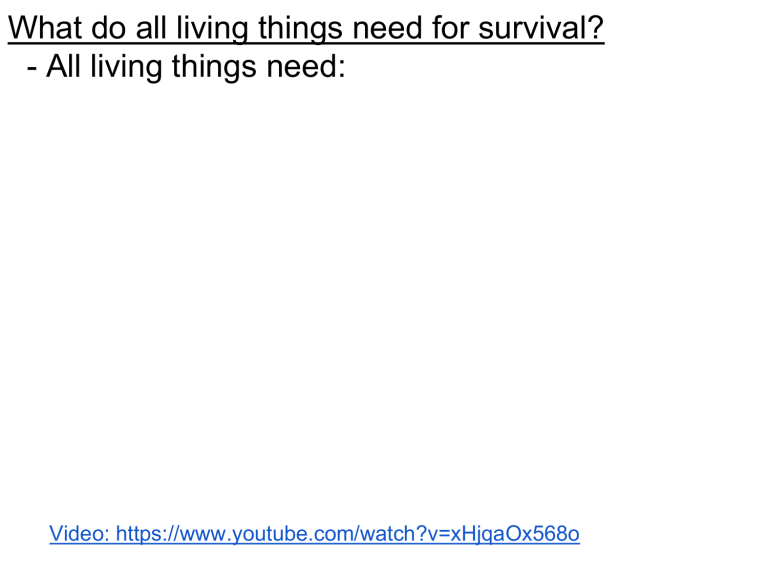
What do all living things need for survival? - All living things need: Video: https://www.youtube.com/watch?v=xHjqaOx568o What do all living things need for survival? All living things need: - Suitable living conditions (habitat) - Oxygen (gas exchange) - Food - Energy - Water S.O.F.E.W How long can you live without them? - Suitable living conditions (habitat) weather dependent – hours? - Oxygen (gas exchange) approx. 5 mins - Food 1 – 3 weeks (Ghandi) - Energy Sleep – record is 11 days - Water 3 days How has our ability to satisfy our needs and wants changed over time? How has our ability to satisfy our needs and wants changed over time? - technology allows us to turn our attention to "wants" instead of "needs" - we can satisfy our needs and wants for food, clothing and other manufactured goods because of global trade, global transportation and industrial farming/manufacturing - we live in large homes with heat, electricity and running water - we travel in cars, trains and airplanes Topic 1: Interactions within an ecosystem - What is ecology? What is an ecosystem? - ecosystem - all the interacting parts of a biological community and its environment - it includes the living (biotic) and non-living (abiotic) things interacting in that environment Topic 1: Interactions within an ecosystem - Ecology is the study of the relationship between living organisms and their environment - An organism's environment includes the other living things AND the non-living things in their surroundings. - An ecologist is a scientist who studies the relationships between living things and their environment. Some famous ecologists One of the most famous ecologists was Charles Darwin. He studied how organisms evolve (change) over time in response to changes in their environment. His theory for how these changes occur is called "natural selection". Some famous ecologists Rachel Carson is known for popularizing ecology and the environmental movement with her famous book Silent Spring. The book, published in 1962, documented the negative effects of pesticides on the environment. Some famous ecologists More recently, Jane Goodall and David Suzuki have continued to show us that our actions have impacts within the living and non-living parts of our own environment. Case study - By 1928, the Swift Fox had disappeared from the Alberta prairies. What happened to these creatures? This is the sort of question that ecologists can help us answer. Case study - It turns out that hundreds of swift foxes were accidentally killed when farmers were using poison to kill the wolves and coyotes that preyed on their cattle. Swift foxes also lost much of their natural home when land was taken over for farms and cities. Case study - Now, humans are helping the swift fox! New programs have reintroduced the swift fox to the prairies, and groups of concerned citizens are working with ecologists to ensure that swift foxes have the type of home that they need.
